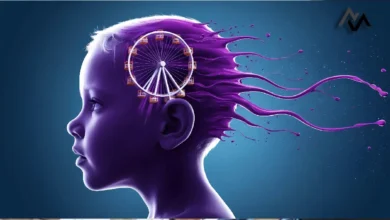Accelerating Grid Transformation: Three Phases to a Resilient and Sustainable Future

The energy grid as we know it is undergoing a rapid transformation to meet the demands of a decarbonized, digitalized, and decentralized future. Grid modernization is no longer a choice but a necessity, as stakeholders strive to integrate renewable energy, ensure grid reliability, and support the growing demands of electrification, especially with the rise of electric vehicles (EVs). This transformation is taking place through a structured approach involving three distinct phases: initiating modernization, integrating emerging technologies, and innovating for long-term sustainability. Here’s a look at these phases and their importance for a resilient, sustainable grid.
Phase 1: Initiate Modernization with Essential Upgrades
The first step in grid transformation is foundational modernization, which involves updating and strengthening the existing infrastructure. Traditional power grids were designed for a one-way flow of electricity, from power plants to consumers, but modern energy demands a two-way grid that can handle power input from distributed energy resources (DERs), such as residential solar systems. To meet these needs, utilities must invest in smarter infrastructure, including advanced metering systems, automated control devices, and enhanced distribution systems that can dynamically balance supply and demand in real-time.
Grid modernization at this stage also includes making the system more resilient against extreme weather events, which are increasingly affecting energy stability. Through improved data collection and real-time monitoring, utilities can gain insights into grid performance, helping them react quickly to disruptions and minimize power outages. These foundational upgrades create a platform for more advanced technologies and pave the way for the next phase of grid evolution.
Phase 2: Integrate Digital Technologies and Distributed Energy Resources (DERs)
Once the basic infrastructure is upgraded, the focus shifts to integrating digital technology and distributed energy resources. This phase is marked by the deployment of microgrids, which can operate independently of the main grid if needed, and by embracing digital tools that allow for smart, autonomous operations. Microgrids enhance resilience and reliability by acting as independent power sources in emergencies. Digitalization also enables utilities to monitor and control energy flows more efficiently, reducing waste and enhancing grid flexibility.
Key technologies in this phase include smart sensors, advanced analytics, and digital twins (virtual models of physical systems). These tools allow utilities to optimize grid operations by predicting issues before they occur and to ensure stable integration of renewables and DERs. Additionally, the rise of artificial intelligence (AI) in grid management offers utilities predictive insights that help them make data-driven decisions. For example, AI can forecast energy demands more accurately, enabling utilities to adjust power distribution dynamically, ensuring energy is delivered where it’s needed most.
Phase 3: Innovate for Sustainable, Future-Proof Solutions
In the third phase, utilities move from integration to innovation, focusing on creating a future-proof grid that can adapt to new challenges and technologies over time. This phase is characterized by extensive collaboration among stakeholders, including utilities, tech companies, regulatory bodies, and consumers. By working together, these groups can develop solutions that support carbon reduction goals, leverage renewable energy sources, and promote electrification while keeping costs manageable for consumers.
Innovation also encompasses developing new business models that allow utilities to diversify their revenue sources. With the rise of DERs, traditional utility companies are facing competition from alternative energy providers and decentralized energy generators. By exploring services such as energy storage, demand response, and electric vehicle charging solutions, utilities can add value beyond just supplying electricity.
Moreover, investment in research and development (R&D) is crucial in this phase. As utilities innovate, they often turn to partnerships with tech firms and startups, which bring fresh perspectives and specialized knowledge. These collaborations can accelerate the development of grid-enhancing technologies and ensure that utilities remain at the forefront of the energy sector’s evolution.
Overcoming Challenges and Moving Toward a Decarbonized Future
Despite the promise of grid modernization, utilities face significant challenges, including regulatory constraints, high capital costs, and competition from new energy players. Traditional utility models are being disrupted as consumers become energy producers through rooftop solar and community microgrids. These dynamics call for new regulatory frameworks that support investment in grid upgrades while ensuring consumer protections.
Additionally, the talent gap is a pressing issue. As grid technology becomes more sophisticated, utilities must compete with high-tech companies for skilled professionals in data analytics, software engineering, and systems management. Addressing these talent shortages is essential to realizing the potential of a modernized, digitalized grid.
Conclusion
The transformation of our power grid into a resilient, efficient, and sustainable system is underway, and it will be achieved through these three key phases. By taking a structured approach—starting with essential infrastructure upgrades, moving into digital integration, and finally embracing innovation—utilities can create a grid that meets the demands of the future while delivering reliable and affordable energy to consumers. Collaboration across industries and a commitment to decarbonization will be essential in achieving these goals, paving the way for a new era of clean and smart energy.




